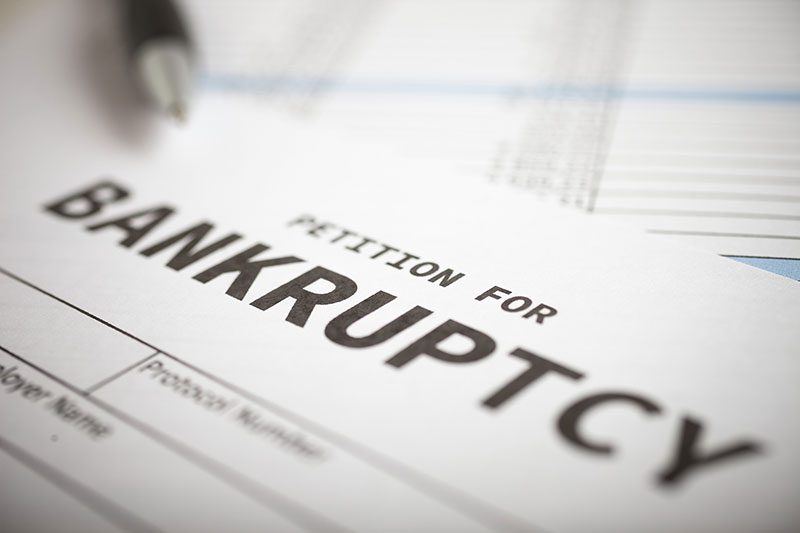No one wants to think about the possibility of business bankruptcy, but there are times when it is the best solution for a struggling or failing small business. Whether you’re a business owner or an investor, it’s important to understand how this sometimes-complex process works so that you can protect yourself and hopefully have the best outcome possible.
There are a range of factors to consider when a business bankruptcy is the best option, including what type to utilize and how it will impact both small business owners and investors. This overview will help you get a greater breadth of knowledge so that you can protect yourself or your organization, should bankruptcy be part of your future.
Business Bankruptcy Basics
In general terms, small business bankruptcy is a legal proceeding filed by organizations that are unable to meet their financial obligations and are dealing with severe financial difficulties. Business bankruptcy proceedings are always handled by a federal bankruptcy court under federal laws. When this takes place, it gives companies the opportunity to either reorganize their personal and business debts and restructure their business or liquidate their business assets to pay back creditors and investors. Basically, a business bankruptcy can either help a company liquidate and close its business or help it restructure and recover from financial difficulty.
All business bankruptcies are unique, and as such, the chances that a company will recover or that creditors and investors will get their money back depends on each individual small business bankruptcy proceeding.
What Are the Different Types of Business Bankruptcy?
There are two basic types of business bankruptcy available for a struggling business. Which type is right for an organization depends on whether there is a chance for any type of recovery. If a small business debts are too financially compromised for any real chance of recovery and liquidation is needed, Chapter 7 is the best option. If restructuring and reorganization can help, then many businesses go with a Chapter 11. There is also a less expensive option under Chapter 11 United States Federal Court Bankruptcy Code Subchapter V that applies to certain small business bankruptcy debtors.
Chapter 11 Business Bankruptcy
When a company file bankruptcy for a Chapter 11, it’s likely due to financial trouble that may result in business debts failure, without some type of intervening financial protection or restructuring. Chapter 11 recovery is possible with expert guidance, discipline, hard work and careful steps to get back into the black.
Organizational restructuring is an important aspect of Chapter 11 business bankruptcy that can help a small business outstanding debt by reorganizing its business debt relief. Weather a limited liability company or sole proprietor, Chapter 11 may involve negotiating with creditors outside of court or litigating in a federal bankruptcy court. Often, organizations work with financial professionals experienced in small business assets and successful organizational restructuring. However, Chapter 11 business debt and equity restructuring may not always work out, and in some cases a full, Chapter 7 bankruptcy liquidation may be required.
Chapter 7 Business Bankruptcy
For a business with no hope of turning things around, Chapter 7 bankruptcy may be the only option. The company must stop small business debts completely and a court-appointed chapter 7 bankruptcy trustee is put in charge to help with the liquidation of large or small business assets and distribution of funds to pay creditors or investors.
With a chapter 7 bankruptcy, the repayment plan of business, personal and business debts must be performed in a certain order, with secured creditors getting paid first, followed by creditors getting a portion of whatever is left. Chapter 7 bankruptcy secure creditors typically loan money to a business with collateral, such as liens on a company’s mortgage or small business property. Unsecured creditors don’t have collateral or guarantees on their loans to the company and may include bondholders.
Can Investors Get Out of Bankruptcies?
If you’re an investor, you’re probably wondering if it is even possible to get out of a bankruptcy with any of the money that you invested. This will all depend on the type of investment and the type of business bankruptcy filing.
The first thing you should do when invested in a company facing business bankruptcy is to file a claim. This does not guarantee that you’ll get your investment back, but it does put you in line with other secured and creditors so that you may be able to receive repayment plan when it’s your turn.
Takeaways
Whether you are a business owner or an investor, bankruptcy process can feel like the end of the road. Remember, Chapter 11 business bankruptcy is designed to help companies come back from the brink. There are times when nothing can be done to save a failing company—sometimes bankruptcy is exactly what an organization needs to get back on track towards success. Companies with strong operations but a balance sheet in need of restructuring may be the best candidates.
If it seems like business bankruptcy filing or personal bankruptcy filing is the next step for your company, contact Rocky Mountain Advisory. Our team of experienced professionals can help you find competent bankruptcy attorney to assist you through the legal process and we can provide the necessary financial advisory services to help you emerge successfully.

